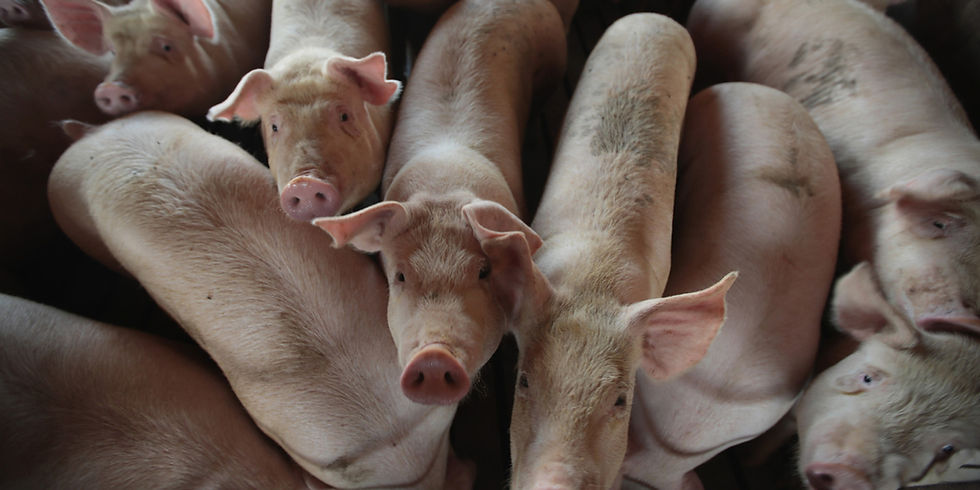California Agriculture Surpasses $60 Billion in Production Value: Growth, Challenges, and the Road Ahead
- by AGC News

- Sep 29
- 3 min read

California agriculture has reached a historic milestone. According to the California Department of Food and Agriculture (CDFA), the state’s farms and ranches generated approximately $61.2 billion in cash receipts for 2024, a 3.6 percent increase over the previous year. This marks the first time in state history that agricultural production has surpassed the $60-billion threshold, underscoring California’s unmatched role as the nation’s leading agricultural producer.
The Significance of $61.2 Billion
Crossing the $60-billion mark is more than a symbolic victory. It reflects the continued strength of California’s diverse crop and livestock portfolio and its position in both domestic and global markets. High-value fruits and vegetables remain pillars of the state’s economy, with crops such as strawberries, lettuce, and other specialty vegetables contributing billions to annual receipts.
Nut crops have also played an increasingly prominent role. CDFA’s Agricultural Exports Report shows that almonds, pistachios, and walnuts collectively represent some of the most valuable commodities grown in the state, with almonds alone continuing to hold the position of California’s leading export. Poultry and select livestock categories round out the top contributors, providing an important measure of diversification.
This achievement highlights the enduring strength of high-value specialty crops. California’s agricultural system is uniquely positioned to capitalize on strong consumer demand for fresh produce and tree nuts, as well as well-established export channels that connect state growers to international markets.
Labor Pressures on a High-Value Industry
Despite the strength of the top-line number, challenges loom large. Labor remains one of the most pressing concerns. Research from the UC Giannini Foundation of Agricultural Economics has documented how persistent shortages have led many growers to adjust or delay harvests, with some crops suffering yield losses as a result. Mechanization is accelerating, but the transition is uneven and not all crops can be harvested efficiently by machine. The reality is that California’s $61.2 billion achievement still relies heavily on a seasonal, labor-intensive workforce that is increasingly difficult to secure.
Water Supply and Allocation Risks
Water availability continues to shape the future of California agriculture. Even with improved precipitation in recent seasons, the state’s farmers remain dependent on variable surface water allocations from the Central Valley Project and the State Water Project. Local groundwater sustainability requirements add another layer of complexity, forcing growers to adapt their water strategies year by year. Irrigation reliability is critical for crops such as almonds, pistachios, and grapes, where yield and quality depend on consistent water supplies. A disruption in allocation or increased irrigation costs can quickly erode margins, regardless of commodity prices.
Climate Variability and Long-Term Resilience
The impacts of climate change compound these challenges. UC Davis Climate Adaptation Research underscores how extreme heat events, shifting precipitation patterns, and the growing risk of frost and drought alter production dynamics across the state. Specialty crops, particularly fruit and nut trees, are highly sensitive to weather fluctuations. Changes in pest and disease pressures further complicate management and increase costs. Adaptation is already underway, with growers exploring new varieties, altered production calendars, and soil-health practices that build resiliency. But long-term climate variability remains a significant risk to sustaining and growing California’s agricultural output.
Sustaining Momentum Beyond the Milestone
While surpassing $60 billion in agricultural production is a testament to California’s resilience and innovation, it also highlights the fragility of the systems that sustain this success. Farmers continue to shoulder the burden of rising labor costs, uncertain water supplies, and a climate that demands continuous adaptation. Policymakers have a role to play in ensuring that support for mechanization, irrigation efficiency, and climate-smart agriculture programs remains strong. Investment in export competitiveness will also be critical, as international markets continue to absorb a significant share of California’s specialty crop production.
Looking Ahead
California’s farms and ranches have achieved a remarkable economic milestone. Yet the true measure of success will not be found solely in cash receipt totals, but in the industry’s ability to adapt to changing labor dynamics, water availability, and climate pressures. The $61.2 billion figure serves as both a point of pride and a reminder of the ongoing work required to secure the future of California agriculture.
















